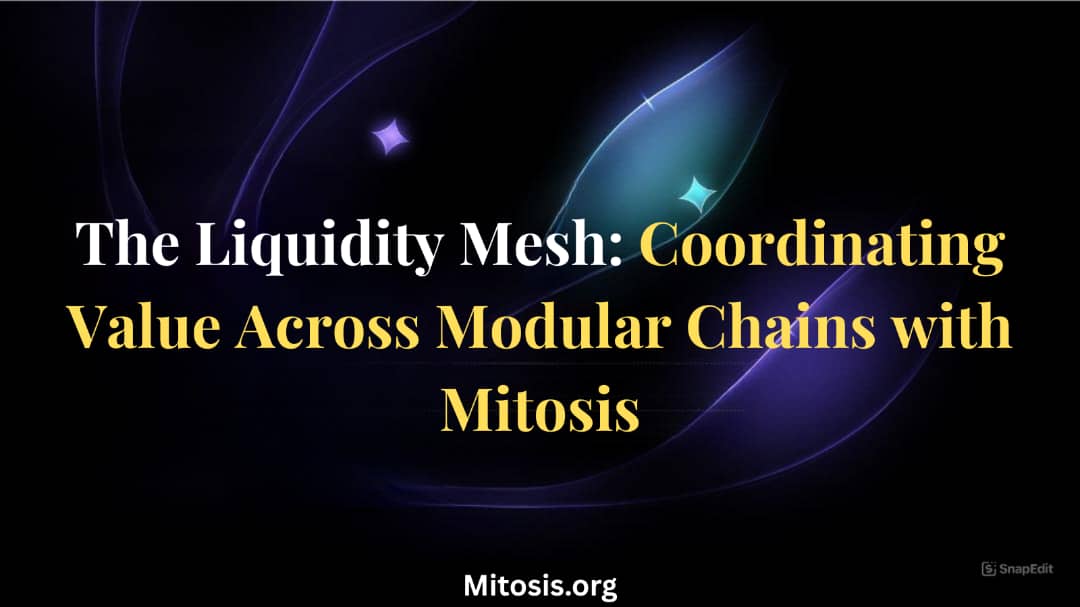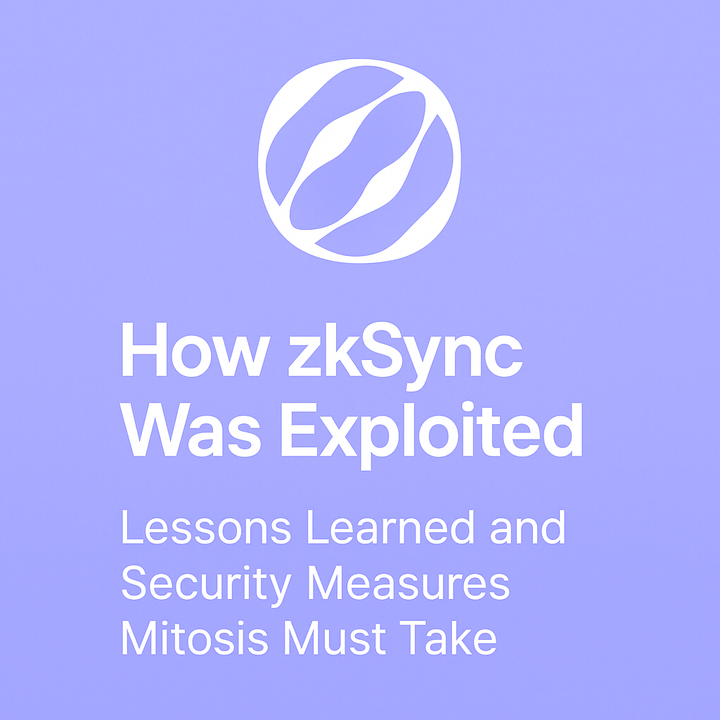The Liquidity Mesh: Coordinating Value Across Modular Chains with Mitosis

In the rapidly evolving landscape of decentralized finance (DeFi), liquidity remains one of the most precious and volatile resources. As new chains, execution layers, and modular infrastructures emerge, the challenge is no longer just about attracting liquidity, but coordinating it, intelligently, flexibly, and sustainably. Enter the concept of the "Liquidity Mesh," and the role Mitosis plays in realizing this vision.
1.0. Understanding the Liquidity Mesh
A liquidity mesh is a conceptual framework where liquidity doesn't exist in isolation or silos, but as a dynamic, interconnected layer of capital that moves fluidly across protocols, ecosystems, and blockchains. Unlike traditional cross-chain bridges that simply allow tokens to move from one chain to another, a liquidity mesh is governed by intent, strategy, and real-time data.
Instead of being reactive (moving capital only when prompted), a mesh is proactive, anticipating yield opportunities, monitoring protocol health, and rebalancing positions automatically to optimize outcomes.
2.0. Mitosis as the Coordination Layer
At the center of this mesh lies Mitosis, acting as an intelligent runtime environment for liquidity. Rather than just serving as a router or bridge, Mitosis functions as a modular liquidity OS, a middleware layer that processes real-time data, enforces governance logic, and automates capital allocation based on programmable yield signals.
Think of Mitosis not as a highway, but as the GPS system that maps every possible liquidity route and chooses the most efficient one based on ongoing conditions.
3.0. Beyond Bridging: Elastic Capital
Traditional cross-chain solutions often suffer from static routing. They rely on manual intervention or slow governance proposals to shift capital. This creates friction and inefficiencies, especially in fast-moving markets. Mitosis transforms capital into an elastic resource, capable of flowing across vaults, chains, and protocols without user intervention.
For example:
- If a vault on Arbitrum is experiencing diminishing returns, Mitosis can reallocate some of that capital to a more efficient strategy on Optimism.
- If a governance event on a protocol temporarily spikes APRs, Mitosis can direct liquidity to capture that value.
All of this happens through a combination of on-chain automation, intent-based logic, and transparent governance.
4.0. The Role in Modular Blockchain Architectures
Modular blockchains are splitting up the monolithic stack separating execution, settlement, and data availability layers. This creates a fragmented landscape where liquidity needs to operate independently from where transactions are executed.
Mitosis becomes the connective tissue in this modular paradigm:
- Execution layers don’t need to bootstrap their own liquidity.
- Rollups and app-chains can tap into shared pools managed by Mitosis.
- Protocols can integrate directly into Mitosis’s runtime to build financial primitives on top of a constantly optimizing liquidity base.
This unlocks true composability without requiring protocols to fragment their own tokenomics or chase LPs across chains.
Real-World Applications
- Protocol-Native Rebalancing
Instead of users manually chasing yield, protocols can embed rebalancing logic via Mitosis to route user deposits to the best-performing vaults.
- Stablecoin Arbitrage
Capital can move across ecosystems to arbitrage different stablecoin yields or peg mechanisms, maintaining equilibrium in times of volatility.
- Network Bootstrapping
New chains or rollups can attract temporary liquidity through Mitosis without having to rely on unsustainable incentives.
- Yield-Derivative Composition
Tokenized yield streams (via miAssets and maAssets) can layer on top of the liquidity mesh, enabling structured products, DAOs, and treasuries to build tailored financial instruments.
5.0. Toward a Decentralized Liquidity Intelligence
As the DeFi ecosystem matures, it's not just liquidity itself that matters, but liquidity intelligence the ability to decide where, when, and how capital is allocated. Mitosis introduces this intelligence layer, turning passive LPs into informed, protocol-aligned stakeholders.
This intelligence is not centralized. Through ecosystem-owned liquidity (EOL), the community governs the mesh setting rules, adjusting routing priorities, and evolving strategies in response to market changes.
Conclusion
The Liquidity Mesh isn’t just a vision, it’s a necessary evolution. In a world of increasingly modular chains, fragmented execution environments, and complex yield dynamics, Mitosis provides the missing infrastructure to unify, automate, and optimize capital flow.
By transforming liquidity into an elastic, intelligent, and governable resource, Mitosis redefines what capital coordination can look like in the age of modular DeFi. It shifts the paradigm from yield-chasing speculation to structured, protocol-aligned liquidity orchestration. In doing so, it paves the way for an ecosystem that is not only more capital efficient but also more resilient, composable, and sustainable for years to come.
Are you ready to be part Mitosis Community?



Comments ()